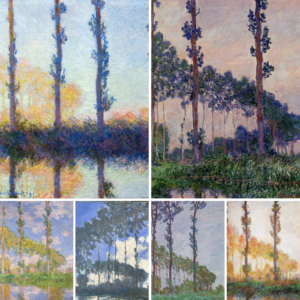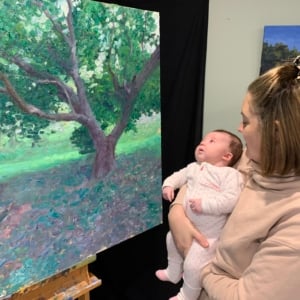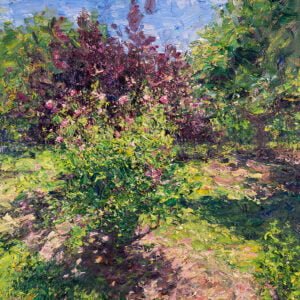Here’s one fresh off the easel: Montville, Tree in Mist.

Below are some key takeaways from this painting:
- I used bold outlining with rich blues and greens to help distinguish the leaves and plants in the foreground. I drew inspiration from Vincent van Gogh for this. (One of the benefits of learning about art history is that you develop a deep understanding of all the different techniques and processes the masters used. You can then pick and choose from these to help create your own work.)
- A key idea of the painting is the rich, lush greens. It had been raining that weekend in Montville and the landscape was filled with all kinds of rich and wonderful greens. To mix these greens, I used combinations of cadmium yellow light, viridian green, and cobalt blue. The key is mixing yellows and blues that lean into each other on the color wheel and don’t contain any traces of red. I wrote more on this here: How to Mix Vivid Greens.
- The background plays into the idea of a vague, misty day. It looks abstract up close, but it makes sense in the context of the painting as a whole. I used scumbles of light color to provide only a hint of the sky, the trees in the distance, and the overhanging branches and leaves.
- The main tree acts as the foundation of the painting. It’s the strongest, most solid shape and I painted it as such. I used thick, vertical strokes with a flat brush with dark colors, focusing on conveying a strong, solid shape. I didn’t worry so much about the other elements, such as perspective, rending of light and shadow, and contours. (The role an object plays in your painting should influence how you paint it.)
- The ground appears more detailed than it actually is. I used thin washes of rich color, then applied dabs of light, shadow, and other earthy colors over the top. This is all about painting the illusion of detail, rather than painting the detail itself.
Happy painting!
Dan Scott
drawpaintacademy.com






